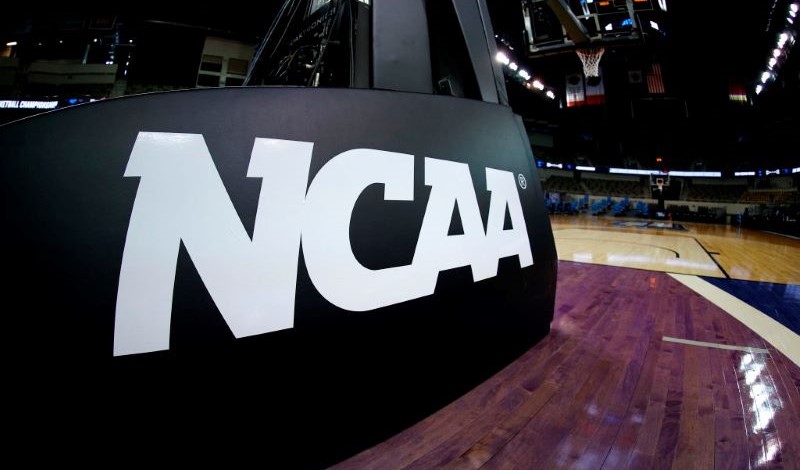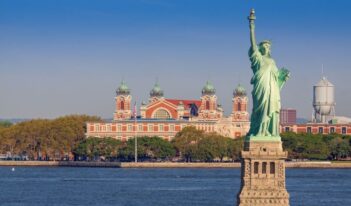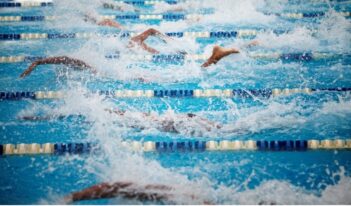
Scholars argue that foreign student-athletes must now choose between earning money and keeping their immigration status.
Some college athletes make more than $1 million a year. This money has poured in following a 2021 NCAA eligibility rule change that now allows student athletes to profit off their names, images, and likenesses. Missing out on this windfall, however, are foreign athletes whose student visas—and accompanying work restrictions—have left them in what ESPN has called a “legal no man’s land.”
In a new paper, Victoria J. Haneman and David P. Weber of Creighton University School of Law contend that the U.S. Congress or immigration services should amend existing regulations to allow foreign athletes to receive the same financial opportunities as their domestic-born teammates. Haneman and Weber also propose several strategies for foreign athletes to consider until immigration policy changes are made, but they warn that these interim options could carry risks to an athlete’s current and future visa status.
Haneman and Weber note that foreign student athletes, who make up 12 percent of the roughly 450,000 college athletes across the United States, most commonly receive F-1 student visas. Lawmakers created this visa in 1952, long before they had reason to include an exception for college student-athletes looking to profit off their identities as sports stars.
Haneman and Weber caution that, generally speaking, student athletes holding an F-1 visa are not permitted to work while in the United States. If caught violating this rule, they may be deported and prevented from ever reinstating their student status. Haneman and Weber emphasize that the current federal immigration rules also provide that a student’s employer could be sanctioned. The prohibition, however, has three exceptions.
The first exception applies to work performed on campus for the student’s institution. But Haneman and Weber say that this exception would not allow for sports endorsements under current interpretations of the rules, since the NCAA’s new name, image, and likeness rules prohibit schools from compensating athletes directly.
The second exception allows students facing “severe economic hardship caused by unforeseen circumstances beyond the student’s control” to work off-campus after their first year of studies. Haneman and Weber emphasize that satisfying the severe economic hardship prong would be difficult for foreign student-athletes because, to receive an F-1 visa in the first place, students must prove they have sufficient funds to cover the duration of their studies.
The final exception allows students to perform curricular or practical work, which visa regulations define as work that directly relates to a student’s area of study. Haneman and Weber note that this exception could create an opening for foreign student athletes majoring in fields such as communications. They could tie their name, image, and likeness earnings to sponsored social media posts that they make as part of an internship with a communications focus. Haneman and Weber caution, however, that receiving income in this manner is not clearly permitted under current rules.
Haneman and Weber explain that obtaining another type of visa is not a viable solution for many student athletes. They note that the P-1A visa, commonly granted for foreign athletes competing in the United States, is out of reach for many foreign student-athletes because it requires proof that the athlete already competes at the international level.
Haneman and Weber also emphasize that several other suggested workarounds fall short. Classifying student-athletes as independent contractors, for example, does not offer a solution because the F-1 visa’s employment restrictions apply regardless of the student’s specific employment classification.
In addition, Haneman and Weber suggest that foreign student-athletes could take advantage of existing tax laws by earning passive income through their name, image, and likeness. But student-athletes must have no day-to-day involvement in the earning stream for this income to qualify—meaning they would likely need to hire a content manager for any social media accounts that would be broadcasting sponsored content.
Haneman and Weber note that some foreign athletes have found a straightforward, but burdensome, way around visa regulations: commuting back home for their work. One athlete, an Australian kicker for the University of Miami’s football team, signed an endorsement deal for an Australian company and flew back to Australia to film all of his commercials, complying with regulations prohibiting him from working while in the United States.
As a broader solution, Haneman and Weber propose that U.S. immigration authorities could issue guidance clarifying that student-athletes are authorized to earn money from their name, image, and likeness to the same extent that other students are allowed to profit from similar on-campus employment activities. Haneman and Weber also suggest that Congress could amend existing immigration laws to allow student-athletes to profit without risking their immigration status.
Until those changes happen, however, it will remain risky for student-athletes to jeopardize their current and future visa status for the sake of earning name, image, and likeness money, Haneman and Weber conclude.



